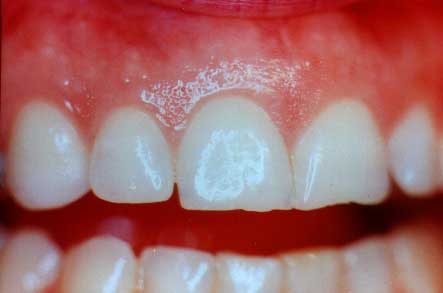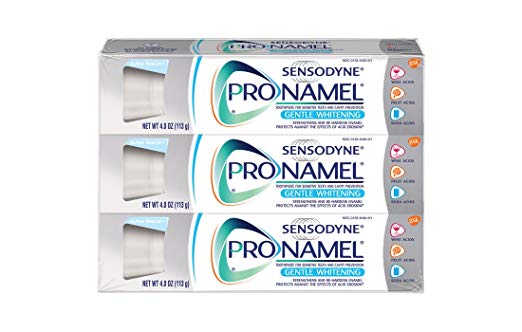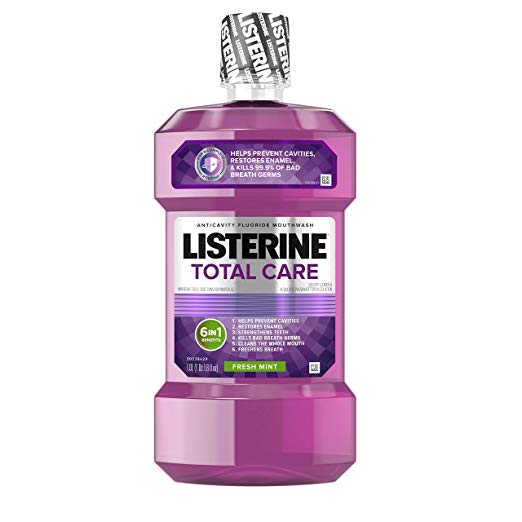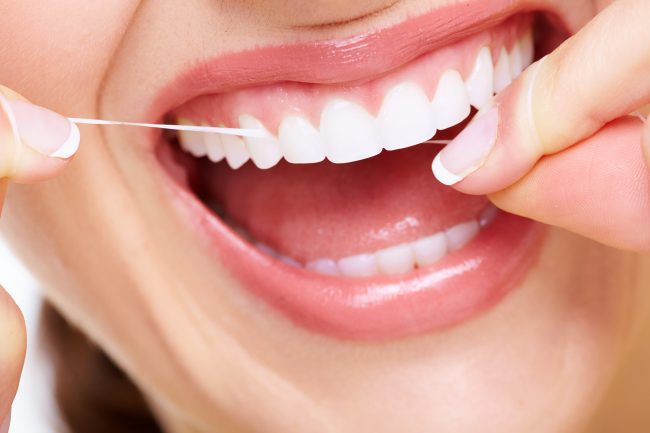Mild or moderate periodontitis results, when inflammation and bleeding around the teeth take place. Bacteria in plaque and the body's defenses start to break down the teeth's gum attachment. This leads to gums pulling away from the teeth and forming pockets of infected matter. Early bone loss around the teeth may also result. Advanced periodontitis is when the gum pockets deepen and there is massive destruction of bone holding teeth in place. Teeth may become so loose, it needs to be removed if periodontal treatment doesn't restore support for the bones.
Symptoms of this disease take place when the condition advances. Symptoms include bad breath that lasts, red, swollen or tender gums, receding gums, pain in chewing, sensitive or lose teeth. Additionally, there are several risk factors for gum disease. Hormonal changes in ladies, smoking or chewing tobacco, diabetes, heredity and certain medicines can also exacerbate it.
Ways to Attain & Maintain Healthy Gums and Teeth
 Excellent oral hygiene like flossing and brushing at least two times a day can prevent gum infections or tooth loss and cavities. Getting your teeth checked by a dentist or dental hygienist once a year also matters as per the ADA. No matter how much or how well one brushes, plaque and tartar buildup and lead to gum diseases.
Excellent oral hygiene like flossing and brushing at least two times a day can prevent gum infections or tooth loss and cavities. Getting your teeth checked by a dentist or dental hygienist once a year also matters as per the ADA. No matter how much or how well one brushes, plaque and tartar buildup and lead to gum diseases.
For brushing correctly, make sure you brush in the morning and before going to sleep. You also need to use a soft-bristle brush and toothpaste rich in fluoride. If the cost cannot be afforded, the key is to buy and use an electric toothbrush. Place the brush at a 45-degree angle against the gums and brush every tooth between 15 and 20 times. Moving the brush gently, use short strokes. Not scrubbing is also important. Brush the outer tooth surfaces using back and forth or short strokes.
Brushing vertically is important for inner upper front teeth using downward, short strokes. Using short, upward strokes for the inside teeth lower is beneficial. Brush chewing surfaces of the teeth with back and forth, short strokes. Replacing the toothbrush when it is frayed and worn about 3-4 months. One should also get a new toothbrush after a throat disease or illness. Not covering the toothbrush or storing it in a closed container is also essential, for it prevents microorganism growth.
Floss with Care
Flossing helps in removing food particles and plaque stuck between teeth and under the gums. For flossing correctly, you need to cut off around 18 inches of floss and hold it between forefingers and thumbs tightly. Placing it between teeth and gently sliding it up and down are important.
When the floss reaches gum lines, curving it around one tooth. Gently rubbing the side of the tooth, moving the floss with upward down motions, ensuring it goes below the gum line. This method needs to be repeated on the remaining teeth, remembering to floss the back teeth's back side.
Watch Your Food
The foods contribute to tooth decay when bacteria are combined in the mouth. For protecting the teeth, there need to be plenty of calcium-rich foods like cheese, yogurt, and milk. Calcium maintains the bone tooth roots are embedded within. This is important for older adults and children when permanent and milk teeth respectively develop.
Avoid sticky sweets like soft candy, taffies, toffees, or pastries. If you want to eat sugary stuff, wash or rinse with water thereafter. Brush the teeth if possible. If you are chewing gum, opt for sugarless brands.
When it concerns the health of your teeth and your gums, remember that one cannot exist without the other. Just because you have a healthy pair of teeth does not mean your gums are perfectly fine. So watch what you eat.
Opt for Regular Dental Cleansing
Dentists can discover early gum disease symptoms if they are seeing the patient regularly. In this way, symptoms may be cured without becoming serious. Professional cleaning remains the only way to deal with tartar. This also removes plaque missed when flossing or brushing. If there is gingivitis, flossing, brushing and regular dental cleaning can help to prevent it.
Quit Smoking
Another reason for smokers to leave cigarettes is the health impact on your teeth. In fact, the onset of gum disease is strongly linked with smoking. As smoking weakens the immune system, it becomes tougher to fend off gum infections, according to the CDC. Smoking also makes it harder for gums to heal, once they have become damaged.
Brushing teeth after every meal matters. This can remove the plaque and food trapped between teeth and gums. Scrubbing the tongue is important too, for it can harbor bacteria. Toothbrushes should ideally have soft bristles and fit into the mouth in a comfortable way. For example, consider battery-powered or electronic toothbrushes. These can reduce plaque and gingivitis more effectively than manual brushing. Swap toothbrush or toothbrush heads every couple of months or sooner if bristles start to fray.
Opt for Flouride Toothpaste

As far as toothpaste is concerned, store shelves are filled with brands that claim they prevent swollen gums, whiten teeth and freshen the breath. But how do you know which one is the best for healthy gums? Ensure that you choose a toothpaste rich in fluoride which has the seal of acceptance from the American Dental Association.
Use a Therapeutic Mouthwash

Available over the counter, therapeutic mouthwashes serve to reduce plaque, prevent or cut down on gingivitis and reduce the speed at which tartar develops or offer a combination of benefits as per the ADA. Further, the rinse helps to remove debris and food particles from the mouth. It is not a substitute for flossing or brushing, though. Check for the ADA seal as this makes it effective.
An Apple a Day…
An apple a day keeps not just the doctor away, but the dentist as well. Crunchy and crisp foods like apple help to scrub away teeth stains. The rigid texture works like a toothbrush, when one is chewing, thereby eliminating stubborn stains across time.
Have Calcium Rich Milk
Drinking milk remains one of the most effective ways to get a daily calcium dose. This strengthens the bone and the teeth. More than 95 percent of the calcium in the body is found in the teeth and bones. If you don't like milk, opt for other sources of calcium like tofu, cheese, yogurt, and broccoli.
Change the Toothbrush
Across time, bristles in the toothbrush break down, making them less effective at removing plaque from the teeth and gums. It is also essential to change toothbrush every 3 months. Should one have flu, cold or mouth infections, it becomes important to change the toothbrush to prevent the return of the infection.
Steer Clear of Tobacco
For completely healthy gums and teeth, it is critical to avoid tobacco in different forms. Tobacco use, whether through smoking or chewing, contributes to a large number of cases of overall tissue problems. Powder found in tobacco stains the teeth but also weakens these. In serious situations, it can even lead to oral cancer.
With correct care, teeth and gums will remain healthy across life. Healthier gums and teeth lead to less risk for gum disease and tooth decay.
Care for Teeth and Gums
The steps to caring for teeth and gums include brushing, rinsing, flossing, eating correctly, and visiting the dentist. Brushing at least twice a day is essential. Additionally, if possible, you need to brush after each meal. Ideally, one should wait thirty minutes post a meal before brushing. This permits enamel softened due to acid during eating to become hard and not be removed by brushing easily. Brushing further removes plaque that adheres to the teeth. When bacteria in the plaque comes into contact with food, this produces acids. These further lead to cavities.
How to Floss and Rinse the Mouth

Additionally, mouthwashes do more than just freshening the breath. It is important to rinse with mouthwashes that are antiseptic a minimum of once per day to kill bacteria that leads to early gum disease and plaque. A fluoride rinse can help to ward off cavities and teeth decay. Rinses can even do both. It does not matter if one rinses before or after the brush.
Swish the mouthwash between 30 and 60 seconds.
Avoid Sugary Foods
For excellent dental health, it is important to eat a lot of foods but minimize those rich in starches and sugar. These foods produce exceptional acids in the mouth and the longer they remain in the mouth, the more teeth can be damaged. Hard sucking candies are harmful because they stay in the mouth for an extended period of time. For excellent dental health, it is important to eat numerous foods but cut down on those rich in starch and sugar. These foods secrete the most acids and the longer it stays in the mouth, the more the teeth are damaged. Hard candies are especially harmful as they stay in the mouth for a longer time. Snacking on sugar-rich foods can exacerbate tooth decay as many individuals do not brush post snacks. Avoid snacks that can cause further tooth decay such as cakes, cookies, pies, sugar-filled gum, chips, crackers, breadsticks, dry fruits, and raisins.
Visit Your Dentist on a Regular Basis
Visit the dentist at least on a six monthly basis. For maintaining healthy gums and teeth, it is critical to have professional cleanings and checkups on a regular basis. It is also essential to see the dentist if you have pain in the mouth, teeth or bleeding and swollen gums. It is also essential to check with the dental practitioner regarding dental sealants for coating the top and chewing surfaces of the teeth. This coating protects the teeth from decaying and usually last for long time periods.
Use Herbs & Greens
Ginger root is counted as a very powerful healing herb. It has anti-inflammatory properties and promotes healthy tissues in the mouth. Salad greens pack a powerful punch as well and are especially beneficial for keeping the mouth clean as they contain huge amounts of fiber and require careful chewing to break down.
Extra saliva produced by chewing further neutralizes the bacteria in the mouth. High-fiber, stringy items like celeries, raw spinach, and cooked beans offer this benefit. Another potent bacteria-fighting food is raw onion. Onions have an antimicrobial ingredient that destroys bacteria, and as per one study, it completely wipes out 4 bacteria strains leading to gum disease plus cavities. Slivering and tossing the strips in the salad, sandwich, burger or in stews and soups offer value.
Try Foods With Phosphorous
Tooth enamel comprises minerals. Different acidic drinks and foods can cause erosion of the enamel. Making the teeth strong again, one needs to put some minerals back and restore what is lost. The main nutrients that come into play. There are the nutrients which are building blocks of enamel and consuming foods rich in them is vital if you want strong, healthy teeth. While the best sources of calcium are cheese, yogurt, seafood, milk, almond and tofu, the best sources of phosphorous are fish, Brazilian nuts, pumpkin seeds, red meat, tofu, eggs, and broth.
Opt for Crunchy Foods High in Water
Crunchy, hard foods that contain plenty of water are essential for teeth in more than one way. Chewing leads to more saliva, as this serves to neutralize the bacteria implicated in cavities. The texture of foods also makes these naturally abrasive, so gently scrubbing and cleaning teeth surfaces is important, as is the removal of food particles and plaque. These include raw fruits and veggies. Best options are celery, cucumbers, apples, and carrots.
Try Vitamin-D Rich Foods
Vitamin D is not just beneficial for overall health, but it is equally important for healthy teeth. This is because it helps the body to absorb calcium more easily. Top sources of vitamin D include sunlight. Besides this, certain foods are also rich in vitamin D like egg yolks, fish and cod liver oil.
Opt for Vitamin-C Rich Foods
Vitamin C is extremely powerful and it reduces swelling and strengthens blood vessels. This ensures that the gum stays healthier. Vitamin C is also needed for the production of key protein collagen that fends off periodontal disease. Sans vitamin C, gums become vulnerable and sensitive to bacteria causing periodontal disease. Best sources of vitamin C include oranges, bell peppers, kale, strawberries, and broccoli.
Choose Foods Rich in Antioxidants
As far as antioxidants are concerned, the health benefits are simply enormous. So how do antioxidant-rich foods enable the mouth to stay healthy? Specifically, antioxidants fight bacteria causing cavities, inflammation, and periodontal disease.
They also help to protect tissues and gums from cellular damage and bacterial issues. Best sources of antioxidants include berries, raisins, grapes, apples, beans, and nuts.
Opt for Probiotics
When it comes to bacteria within the body, there are dozens of good as well as bad bacteria. Probiotics are gut-friendly bacteria. These decrease plaque and help in promoting healthy gums. Best sources are yogurt, miso, kombucha, sauerkraut, and other foods that are fermented.
Choose Foods Rich in Arginine, Anthocyanins, and Polyphenols
There are many other elements beneficial for oral health. While more research is required, some of the most promising ones are anthocyanins which prevent plaque from attaching on to the teeth and also fend off oral cancer. Arginine is a vital amino acid which disrupts plaque formation and reduces chances of cavities. Then, there are polyphenols which slow the growth of bacteria associated with plaque, thereby preventing cavities, gum disease, and halitosis. While anthocyanins are found in grapes, cherries, berries, plums, eggplants, arginine is found in nuts, soy, and meat. Polyphenols, on the other hand, include green and black tea, flaxseed, berries, and cocoa.
Try Ayurveda

An Ayurvedic remedy, neem is a plant linked to antibacterial properties. Studies on gum health and neem include studies which have compared mouthwashes containing mango, neem or chlorhexidine 2 times a day for 3 weeks. Research showed all three kinds of mouthwashes were effective in reducing plaque and warding off gingivitis.
Use Tea Tree Oil
A 2006 research study found tea tree oil aids in the treatment of gingivitis. If one is thinking of using tea tree oil for improving gum health, it is important to choose a toothpaste that contains this essential oil too. Remember that using undiluted, pure tea tree oil can be toxic.
Try Oil Pulling
An Ayurvedic remedy, oil pulling involves placing a teaspoon of oils like sesame or coconut oil around the mouth for 15 minutes. Research from specific studies in 2009 point to the efficacy of this method in reducing plaque build-up and providing protection against the swelling of gums.
Stay Healthy
Health conditions such as cancer can reduce the ability of the body to fend off infections, increase the risk of developing gum disease and even causing a lot of problems in terms of treatment.
Conclusion
So, keeping your mouth healthy is possible through regular visits to dentists and daily care. Telling dentists about general health, and personal habits like tobacco use affect medication and health, in addition to oral and hygiene habits and providing the complete picture can go a long way towards attaining and maintaining gum and tooth health.




0 Comments